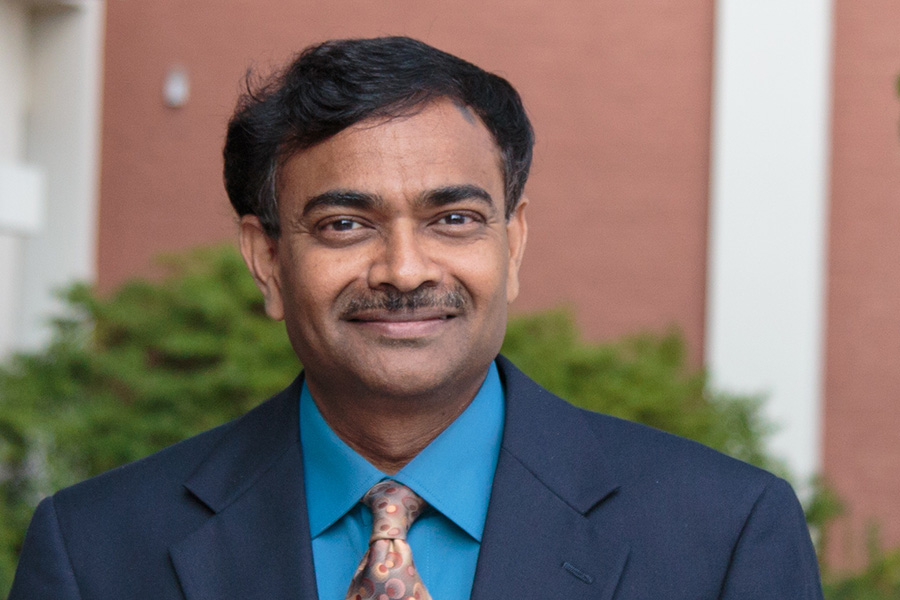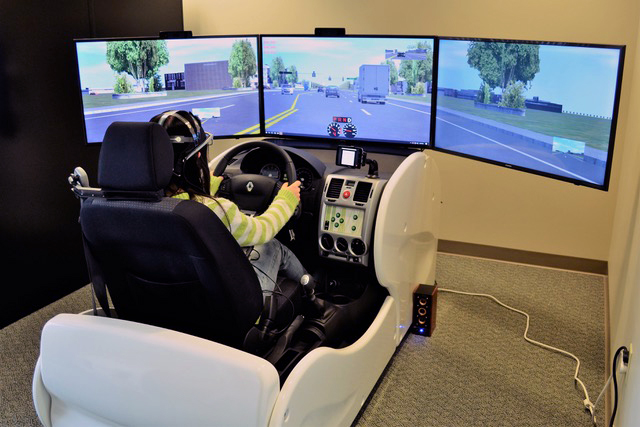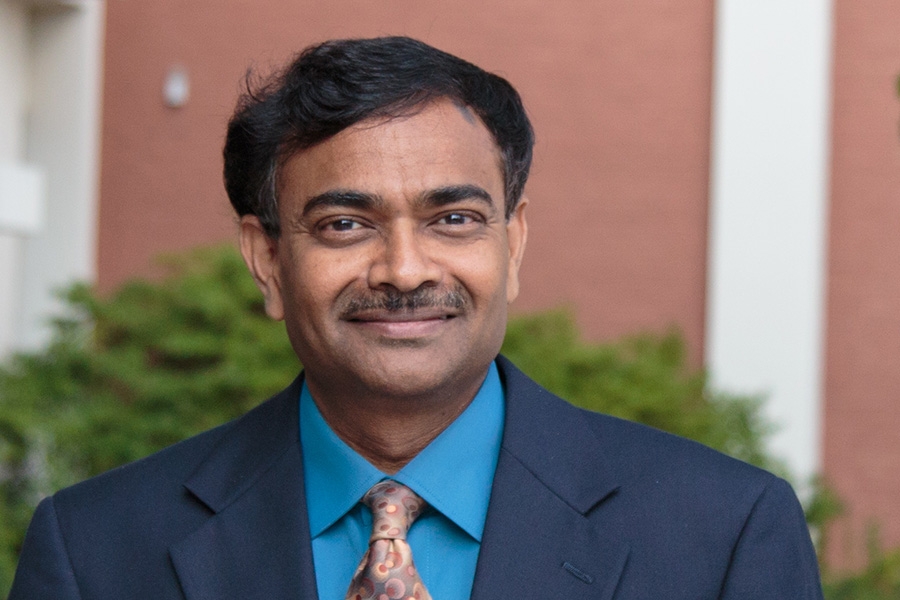 |
The world of fully autonomous vehicles is inevitable, according to one of the newest faculty members in the School of Civil and Environmental Engineering.
The question is, how do we get there with the right policies and investments — and without so many bumps in the road that public trust erodes along the way.
“There will be a critical transition period from where we are today to get to that future where we will have what I call ‘connected autonomous transportation.’ And transportation engineers will play a key role,” said Srinivas Peeta, the new Frederick R. Dickerson Chair in civil and environmental engineering. “There is the need to inform policy. There is the need to understand what type of solutions would lead to a smooth transition versus a rough one, which leads to loss of trust at the public level.”
Peeta, who is also a professor in the Stewart School of Industrial and Systems Engineering, said we’re already seeing harbingers of rough patches, with stories about autonomous Uber vehicles striking and killing a pedestrian or the Tesla owner who died when his car crashed using the Autopilot feature.
“[Losing public trust] can be as simple as people perceiving what we have today as autonomous vehicles, which are not,” he said. “We're not yet at the level where we're looking at a mature autonomous transportation system. It's not just about the vehicle. It's about the human knowing how to interact with these vehicles, both within and outside. And the other thing is the infrastructure. Our infrastructure is built for the vehicle of the past hundred years.”
 A study participant interacts with traffic and information in a driving simulator at Purdue University while wearing an EEG device that measures brain waves and an eye tracker. Srinivas Peeta developed this simulator to understand how drivers think and process information behind the wheel. The work has grown to include correlating brain activity and eye movement with what drivers say they think and do behind the wheel to help inform designs of vehicles and roads. He plans to be a new version of the simulator at Georgia Tech. (Photo Courtesy: Srinivas Peeta) |
Enter Peeta’s decades of research on transportation systems from what you might call a 30,000-foot view — and what engineers call a system-of-systems perspective. Peeta studies transportation in the context of all the connections those systems have to other systems: power, water, natural gas distribution, telecommunications, and more.
“We look at problems holistically rather than just looking at one aspect of a problem, seeing the connections across, which is how societies are set up,” he said.
Autonomous and connected transportation systems are a natural outgrowth of Peeta’s system-of-systems approach because it involves the complicated interactions of people, vehicles and infrastructure and it demands a multidisciplinary approach. He has long studied traveler behavior and predicting traffic conditions to help drivers make better decisions on the road — a research area called dynamic traffic assignment, where Peeta set the standard for research.
In recent years, his work has included using a driving simulator to understand how drivers think and process information.
“The simulator allows us to look at not just what information people have and how do they act on it, but also what is their ability to process such information?” Peeta said. “Part of the question is, what information, how do you deliver that, at what level, and when, so that people can beneficially use it. Whether they choose to use it or not is a different thing, but at least they can absorb it safely.”
Peeta has been correlating brain activity and eye movement to what drivers say they think and do behind the wheel in an effort to inform designs for the future. Vehicle manufacturers need to know how to offer information to drivers — or “passengers” in an autonomous car — and government agencies need to know what information is valuable and how to provide it to vehicles.
“They are questions that need to be answered as we transition to this fully autonomous, connected world,” he said.
Assuming Peeta can help make that transition a smooth one, he paints an idyllic picture of a future that blends individual autonomous vehicles, public transportation, and even reshaping our urban environment, all in the service of making people’s lives better, creating more sustainable cities, and capitalizing on emerging technologies.
“There's this trend of urbanization that's going on worldwide. Cities are getting bigger and bigger, and along with that are imperatives related to sustainability,” he said. “How do you make a place livable? And does livable means having to fight through traffic or having to struggle through a lot of what we consider day-to-day activities? Or can we enhance that in some ways?”
|
Peeta said that’s why Georgia Tech was such an attractive place to continue his work after more than two decades at Purdue University.
“If you really wanted to test and look for impact, what better place to start than Atlanta, which has horrendous traffic situation right now? Urban sprawl as well. You know, Georgia Tech is situated right in the heart of it,” he said.
Tech also offers Peeta connections and access to industry leaders, especially the kinds of tech companies working in areas related to connected and autonomous vehicles. He said he’s energized by the challenges ahead and the opportunity to work across many different fields at Tech to create that future vision he described.
“If you listen to people who have been in transportation engineering, who have been around for say 30, 40, 50 years, they'll say, ‘I can't think of a better time to be in this field, simply because of what potential exists going forward,’” Peeta said. “The opportunity to solve problems that will impact society — that’s what’s attractive to me.”
Srinivas Peeta is one of three new faculty members joining the School of Civil and Environmental Engineering this fall. Read more about the air quality work of Jennifer Kaiser and Jorge Macedo's studies of earthquake and geotechnical engineering.

